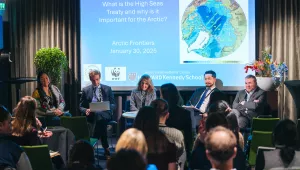Abstract
Water resources development options are usually selected on a least-cost basis. While economic considerations are dominant in choosing projects, there are also a mix of other factors including social demands, political viability, social equity, and environmental considerations that impact final decisions and development of water supply systems. Understanding local priorities in water resource management decisions can allow for forming expectations of future regional water availability through new infrastructure projects. In this research, we propose that future human mediated water availability in arid regions may be assessed by considering key projects that have been identified or proposed by regional experts and organizations. Using Multicriteria Decision Methods as a framework to organize a set of decision criteria and their relative salience, the likelihood of selection (and development) of a project can be determined and used to form expectations of future regional water availability. We apply this approach in a case study of Jordan, and find that large-scale desalination projects—that have been in the planning books for decades—are now most likely to be pursued and implemented in the country. Finally, we discuss strengths, limitations, and the general applicability of this method for assessing future water availability in other arid regions.
Read the full paper (log in may be required): http://onlinelibrary.wiley.com/doi/10.1002/sys.21337/full
Siddiqi, Afreen, Farah Ereiqat and Laura Diaz Anadon. “Formulating Expectations for Future Water Availability through Infrastructure Development Decisions in Arid Regions.” Systems Engineering, May 24, 2016







